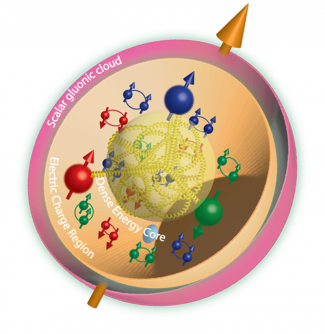The way mass is distributed in a proton is a fundamental puzzle in nuclear and particle physics.
A proton’s core consists of three valence quarks, but they contribute only a small fraction of the proton’s mass. Most of the mass emerges from intricate quark dynamics, including their motion, and is primarily governed by the strong force mediated by gluons. Scientists have made a new measurement that represents a breakthrough in their understanding of the proton’s mass. This measurement localized the central region of the proton as the primary source of gluon-generated mass.
The Impact
For years, nuclear physicists have gauged the proton’s size through precise measurements of its electric charge response. This is a result of the proton’s electrically charged constituent quarks. However, determining the size of the matter in the proton size is a more difficult challenge. This is because a portion of the proton’s mass is not driven by the mass or motion of its charged quarks but rather by the elusive neutral gluons. These gluons bind the quarks and themselves within the proton. A new finding offers a view of this region of mass generated by the interactions of gluons. This measurement not only unravels the mass radius resulting from the strong force but also unveils its confining influence on the quarks that extends well beyond the electric charge radius of the proton.
Summary
Nuclear physicists have been teasing out details of the proton’s structure ever since its discovery in 1917. An important detail of the proton’s structure is its size. The most commonly used measure for the size of the proton is its charge radius, which uses electrons to measure the spherical size of the proton’s electric charge. This new measurement comes from the J/Ψ -007 experiment at the Thomas Jefferson National Accelerator Facility. It is different in that it used a small color dipole (the J/Psi particle) to reveal a spherical size and location of the gluons’ mass and its sphere of influence on the gluons in the proton.
Scientists made these measurements using the Continuous Electron Beam Accelerator Facility, a Department of Energy Office of Science user facility. In the experiment, the scientists used a beam of energetic electrons to produce J/ Ψ particles from protons. The J/ Ψ particles provide information on the distribution of gluons inside the proton. The experimenters inserted these measurements into theoretical models for analysis. The result was a determination of the gluon’s mass radius inside the proton. In addition, it also indicated a strong force sphere of influence, called the confining scalar cloud, that also affects the proton’s quarks.
Funding
This work was supported in part by the Department of Energy Office of Science, Office of Nuclear Physics.


